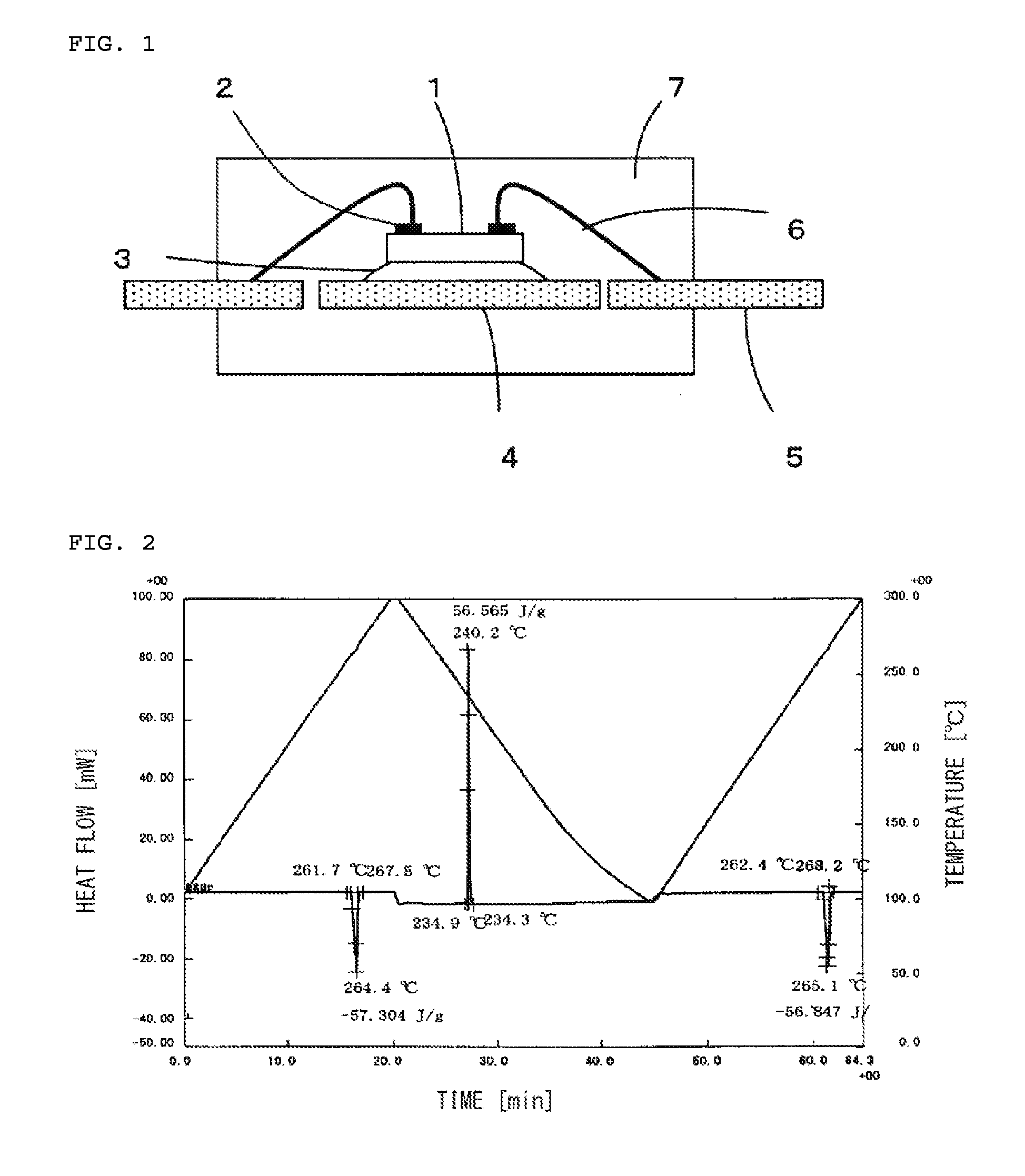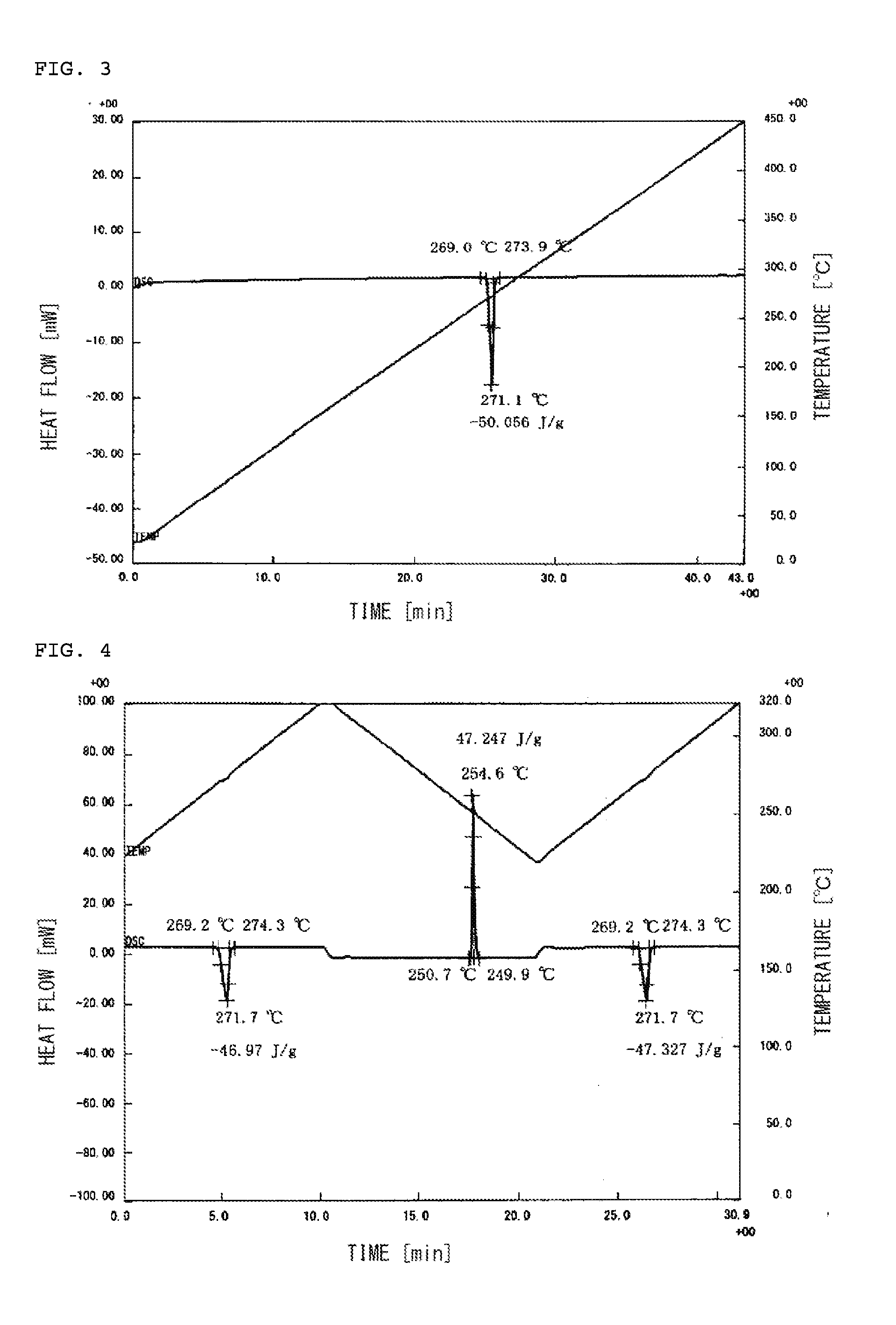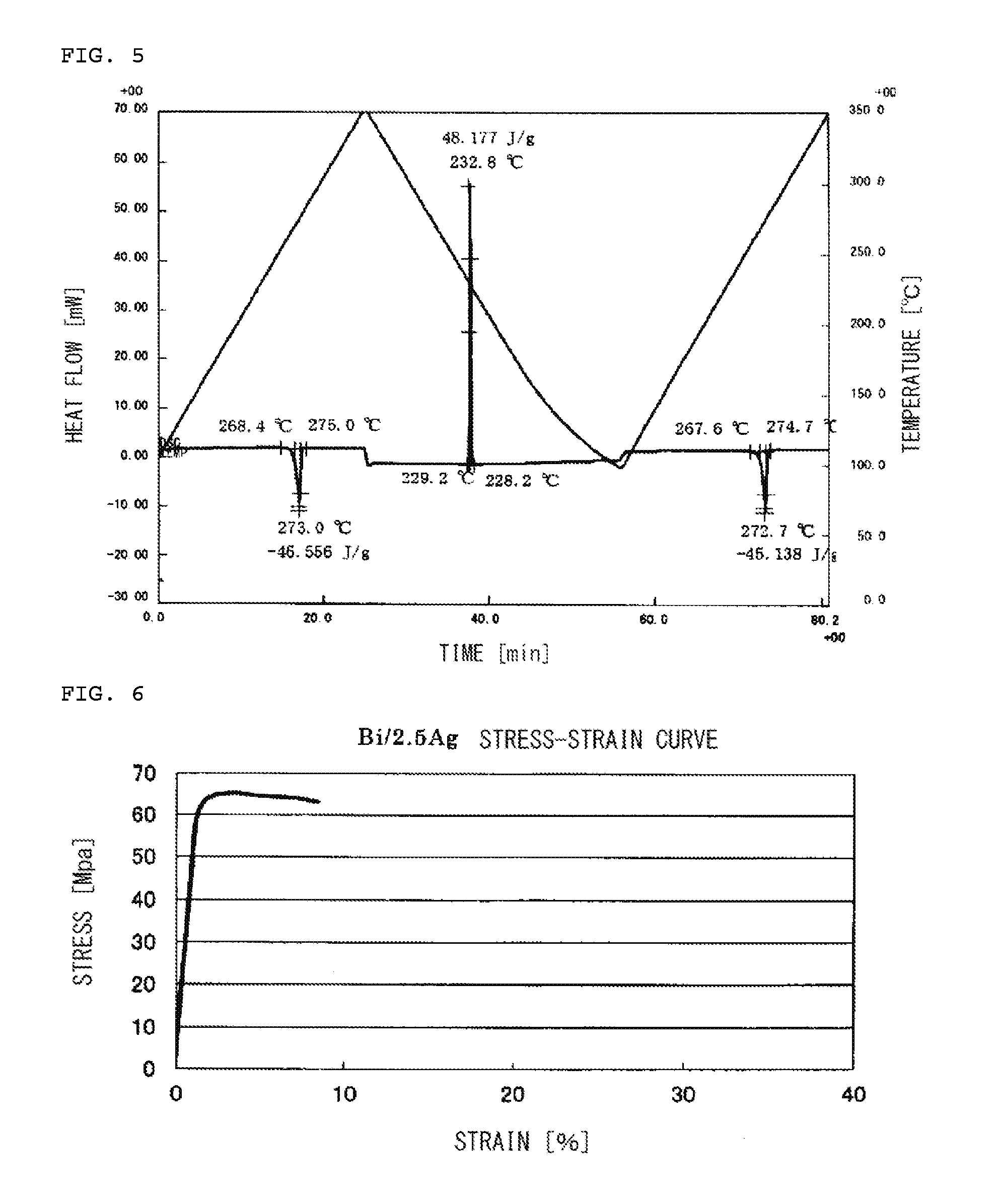Bi-BASED SOLDER ALLOY, METHOD OF BONDING ELECTRONIC COMPONENT USING THE SAME, AND ELECTRONIC COMPONENT-MOUNTED BOARD
a technology of electronic components and alloys, applied in the direction of soldering apparatus, manufacturing tools, printed circuit non-printed electric components association, etc., can solve the problems of pb leakage from products, infiltration into soil, adverse effects, etc., to improve mechanical strength and machinability, improve the wettability of solder, and high joint reliability
- Summary
- Abstract
- Description
- Claims
- Application Information
AI Technical Summary
Benefits of technology
Problems solved by technology
Method used
Image
Examples
examples
[0110]The present invention will be described in more detail using Examples. However, the present invention is not limited to the Examples. The following measurement and evaluation methods were used in the Examples.
(1) Solidus Temperature and Liquidus Temperature
[0111]The solidus temperature and liquidus temperature were measured using a differential scanning calorimeter (DSC).
(2) Tensile Strength and Elongation
[0112]First, Bi alloys having component compositions shown in Table 1 were melted using a method described below and an atmospheric melting furnace and extruded into 0.75-mm φ preform wire solder samples.
[0113]The obtained 0.75-mm φ wire solders were each cut into a predetermined length and used as a test sample for measuring tensile strength. Each test sample was set in a tensile tester (device name: Tensilon universal tester), and the tensile strength and elongation thereof were measured automatically.
(3) Observation and Particle Diameter of Ag—Al Intermetallic Compound
[011...
examples 1 to 11
[0121](1) Production of Solder Alloys (Preform Solders) for Ag-plated electronic components
[0122]First, Bi, Ag, Al, Te, Cu, and Ni (the purity of each element: 99.99 weight % or more) in the form of 3-mm φ or less shots were provided as raw materials. If any raw material was a large flake or bulk, the size thereof was reduced to 3 mm or less by cutting, crushing, or other means so that, in the melted alloy, the composition did not vary among sampling areas but rather was uniform. Then, a predetermined amount of these raw materials was charged into a graphite crucible for a high-frequency melting furnace.
[0123]Then, the crucible containing the raw materials was put into the high-frequency melting furnace, and nitrogen was passed through the melting furnace at a flow rate of 0.7 L / min or more per kg of the raw materials to suppress oxidation. In this state, the inside of the melting furnace was heated to 500° C. at a temperature rise speed of 5° C. / sec so as to heat and melt the raw m...
examples 12 to 24
(1) Production of Solder Alloys (Preform Solders) for Bare Cu Electronic Components
[0139]Preform wire solders were produced as in the Examples 1 to 11 except that Bi, Ag, Al, P, Ge, and Cu (the purity of each element: 99.99 weight % or more) were used as raw materials. In all these Examples, the solder alloy could be formed into a wire solder, which then could be would up.
(2) Physical Properties and Performance Test
[0140]Using the preform wire solder samples obtained using the above method, the solidus temperature and liquidus temperature were measured. Also, the diameters of particles including a Ag—Al intermetallic compound were observed and measured. Then, each preform solder sample was die-bonded to a Cu lead frame, and the wettability was evaluated. Further, these members were molded using an epoxy resin and then a temperature cycle test and a ref low test were conducted to evaluate the joint reliability. The results are shown in Table 2.
PUM
| Property | Measurement | Unit |
|---|---|---|
| melting point | aaaaa | aaaaa |
| melting point | aaaaa | aaaaa |
| diameters | aaaaa | aaaaa |
Abstract
Description
Claims
Application Information
 Login to View More
Login to View More - R&D
- Intellectual Property
- Life Sciences
- Materials
- Tech Scout
- Unparalleled Data Quality
- Higher Quality Content
- 60% Fewer Hallucinations
Browse by: Latest US Patents, China's latest patents, Technical Efficacy Thesaurus, Application Domain, Technology Topic, Popular Technical Reports.
© 2025 PatSnap. All rights reserved.Legal|Privacy policy|Modern Slavery Act Transparency Statement|Sitemap|About US| Contact US: help@patsnap.com



